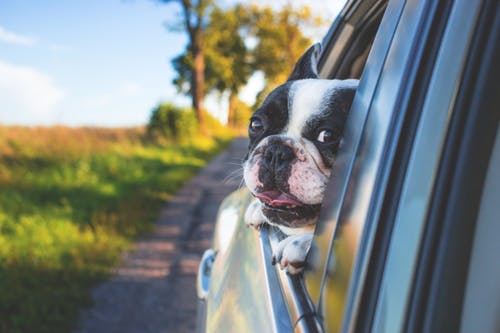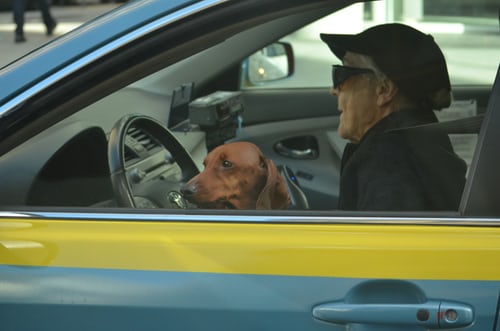
Fido, Fluffy, or Princess, no matter what you call your four-legged companion, you love taking them with you and they love tagging along! If you are heading out in your vehicle you need to make sure they are staying safe, just like you!
For some pet parents, a trip is no fun if the four-legged members of the family can’t come along. But traveling can be highly stressful, both for you and your pets. If you’re planning to take a trip with pets in tow, we have some tips to help ensure a safe and comfortable journey for everyone.
- No matter where you’re headed or how you plan to get there, make sure your pet is microchipped for identification and wears a collar and tag imprinted with your name, phone number, and any relevant contact information. It’s a good idea for your pet’s collar to also include a temporary travel tag with your cell phone and destination phone number for the duration of your trip.
- Never leave your animal alone in a parked vehicle. On a hot day, even with the windows open, a parked automobile can become a furnace in no time, and heatstroke can develop. In cold weather, a car can act as a refrigerator, holding in the cold and causing the animal to freeze to death.
- Prep your pet for a long trip. Get your pet geared up by taking him on a series of short drives first, gradually lengthening the time spent in the car. If you’re traveling across state lines, bring along your pet’s rabies vaccination record. While this generally isn’t a problem, some states require this proof at certain interstate crossings.
- Prep a pet-friendly travel kit. Bring food, a bowl, leash, a waste scoop, plastic bags, grooming supplies, medication and first-aid, and any travel documents. Pack a favorite toy or pillow to give your pet a sense of familiarity. Be sure to pack plenty of water, and avoid feeding your pet in a moving vehicle. Your pet’s travel-feeding schedule should start with a light meal three to four hours prior to departure, and always opt for bottled water. Drinking water from an area he or she isn’t used to could result in stomach discomfort.
- Keep your pets safe and secure in a well-ventilated crate or carrier. The crate should be large enough for your pet to stand, sit, lie down and turn around in. Secure your pet’s crate so it will not slide or shift in the event of an abrupt stop. If you decide to forgo the crate, don’t allow your pet to ride with his head outside the window, and always keep him in the back seat in a harness attached to a seat buckle.
We know you love them and want them to be close to you but being safe is the number one priority. Driving with your pet up front or on your lap can cause an accident or worse.


